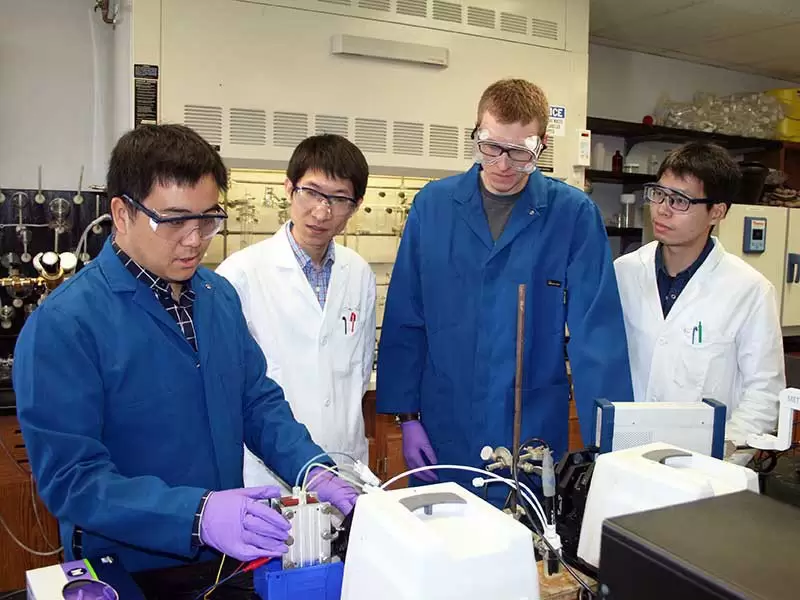US researchers have made progress in the design of a safe, sustainable and economical alternative battery technology for renewable energy storage.
According to Utah State University chemist Tianbiao Liu, battery storage of renewable energy resources such as solar and wind present challenges because of unstable grid energy, heavy cycling that requires frequent charging and discharging, as well as irregular, full recharging.
“For this reason, we need new battery technologies,” Liu said.
Two better than one

Liu’s team has come up with a new molecular design for aqueous organic redox flow batteries (AORFB).
The research, published in Angewandte Chemie, describes the synthetic molecule. A unique feature is a two-electron storage anolyte for neutral – and completely organic – AORFBs.
“The two-electron structure … enables total use of organic materials based on abundantly available elements, such as nitrogen and hydrogen,” Liu explained.
During testing, the prototype battery delivered 1.44V with energy efficiency of 70 per cent, and almost perfect capacity retention of 99.97 per cent.
“The design is very robust and very stable,” said Liu.
Go with the flow
The energy in redox flow batteries (RFB) is stored in liquid electrolyte solutions. These solutions pass through a stack of electrochemical cells during charge and discharge cycles.
The size of the stack determines the power output of the battery (tens of kilowatts to tens of megawatts), and the size of the electrolyte tanks sets the energy storage capacity (500 kWh to hundreds of megawatt-hours). This means that RFBs can be tailored to generator units.
Unlike current popular renewable energy storage technologies – such as lead-acid and lithium ion batteries – redox flow batteries provide complete separation of power and energy. If something goes wrong, the flow can be stopped, and only the small percentage of power stored in the electrochemical cells will be released.
One challenge of RFBs is the low energy density per volume compared to lithium ion and lead-acid batteries, which means they have to be much larger to provide the same storage capacity.
Liu said organic RFBs show promise for large-scale storage of renewable energy, as redox-active molecules are synthetically tuneable, sustainable and economical.
“We think they’re a great alternative to existing technologies to meet growing demand for battery storage of environmentally friendly, renewable energy resources such as solar and wind power,” he said.
